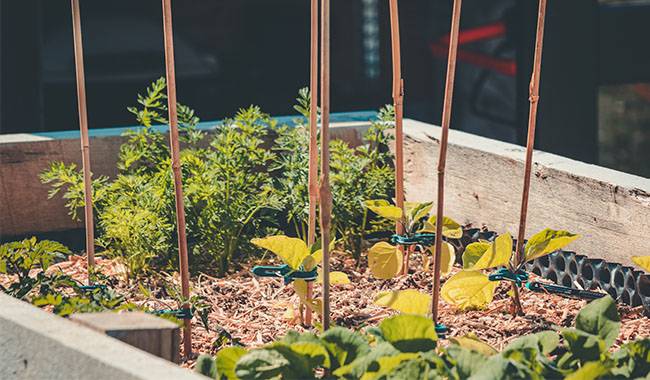
Raised Beds are great: In spring, the soil warms up and dries out much earlier than in a traditional bed. Therefore, you can start planting earlier. And you don’t have to contend with rocks and roots; the soil will still be soft and tender.
Of course, Raised Beds have some drawbacks. For example, they tend to dry out quickly in dry, hot weather. The roots of nearby plants can still find their way into the inviting, nutrient-rich soil of your Raised Beds.
Pleasant and soft, it may also please stray cats. However, all these problems can be avoided: all you need to do is plan correctly and carry out regular preventive maintenance.
Follow these 10 rules for growing at Raised Beds and you’ll be ready to go!
Remember: Never walk on the soil
The most important advantage of raised beds is the soft, airy, “fluffy” ideal soil that is very easy to work with, pleasant to work with, and most plants love it.
Therefore, when making such beds, you should make sure that you can reach every part of them from the outside without stepping on the soil.
However, if you already have a tall bed and have made it so that you have to walk on certain parts of the bed – consider installing special boards so that you can step on them instead of the ground.
Soil mulch after planting
After you’ve finished planting, mulch the raised bed with straw, grass clippings, leaves, or wood chips. Not only does this make weeding less of a hassle, but it also keeps the soil moist for longer.
Consider an irrigation system
There are two types of irrigation that work best for Raised Beds: garden hose irrigation and drip irrigation. If you think about the system beforehand and install it before planting, you can save a lot of time and effort later if you have to water with a hose.
Install root and weed barriers
If you have large trees near your vegetable garden, or if you just want to protect yourself from having to deal with the impressive weeds that grow in the beautiful soil of Raised Beds, it is worth noting that a special barrier is installed at the base of them.
This can be a purchased weed filter, a piece of old carpet, or even a thick layer of corrugated cardboard.
If you already have a Raised Beds and are struggling with weeds every year, you may want to dig up the soil, install a barrier, and then put the soil back in place.
This will take some effort, but it will make your life easier in the future.
Fertilize your flower beds with compost every year
Tilling in a raised bed is essentially the same as tilling in a large, very large container. And, as with any container, the soil gradually settles and its composition becomes worse.
To prevent this, be sure to place a 1-2inch (2.5-5 cm) thick layer of composted fertilizer on top of Raised Beds before starting seeds each spring.
Loosen the soil with a garden fork as needed
To make the soil fluffier and more breathable, simply insert the garden fork as deep as possible and rock it back and forth. Repeat this at 8-12inch (20 to 30 cm) intervals throughout the bed and your soil will be quite loose and airy, although it won’t take much effort on your part.
Take care of the soil even if you don’t till it
At the end of the growing season, cover the soil in Raised Beds with organic mulch, or plant a mulch crop (read below). Soils exposed to the harsh effects of cold weather that are not protected will decompose and compact more quickly.
Use annual groundcovers
Annual groundcover crops, such as annual ryegrass, raspberry clover, and moss peas, will benefit your Raised Beds greatly if you plant them later in the growing season.
They provide nutrients to the soil (especially if you bury them in the spring), reduce erosion, and, in the case of clover and peas, help store nitrogen in the soil.
Think ahead about extending the season
A little advance planning can give you an earlier harvest this season and extend the growing season for part of the fall.
For example, you can install stands, make a low tunnel, or put cling film over your crop – then you won’t have to go to great lengths to protect your plants from the cold.
Consider composting directly in a raised bed
Vermicompost, compost trenches, and placing compost next to your plants are methods you can use to compost directly in Raised Beds.
This way you can provide nutrients to their soil, even if you don’t have the option to build a separate compost pile or container.







